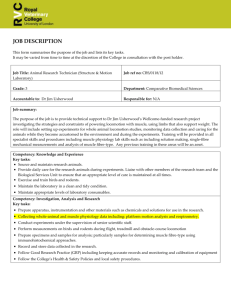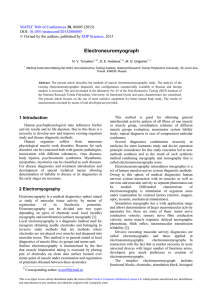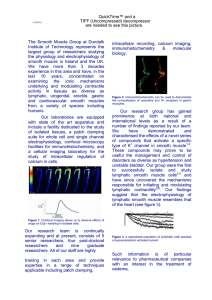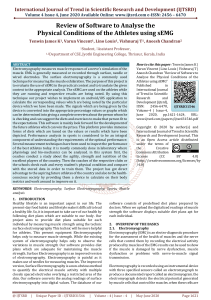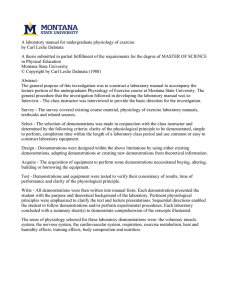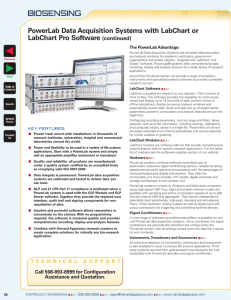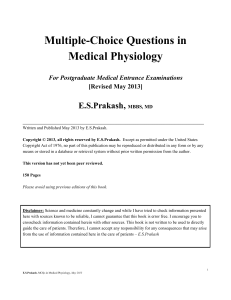AD Instruments Student Laboratory Techniques Workshop - Texas A &... College Station, Texas
advertisement
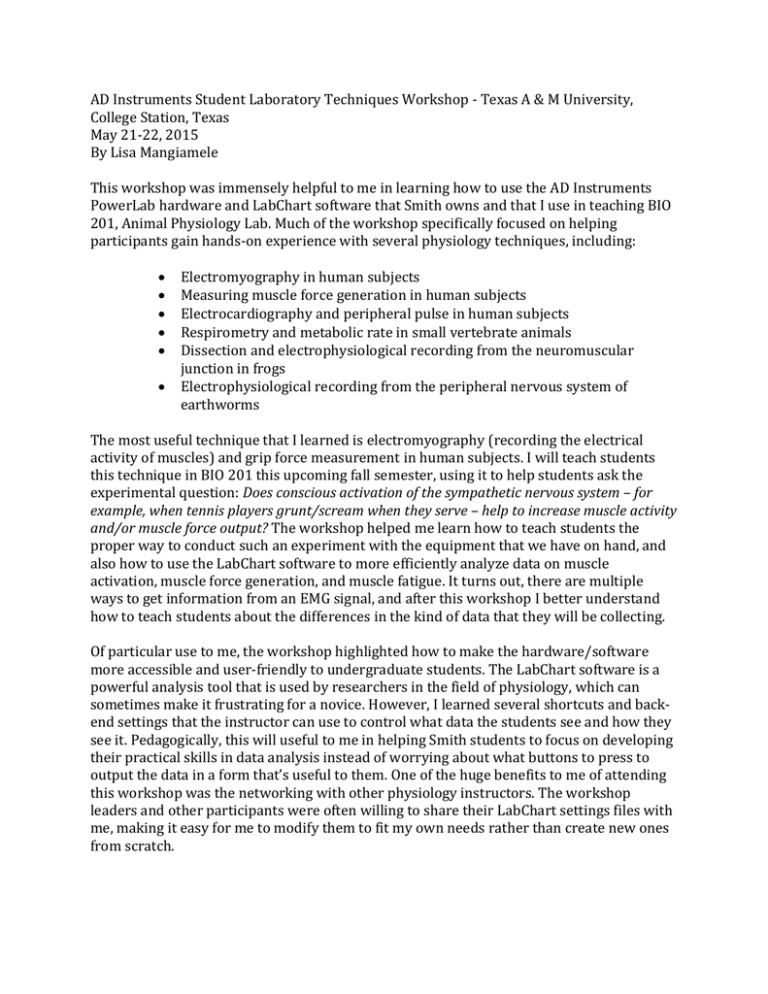
AD Instruments Student Laboratory Techniques Workshop - Texas A & M University, College Station, Texas May 21-22, 2015 By Lisa Mangiamele This workshop was immensely helpful to me in learning how to use the AD Instruments PowerLab hardware and LabChart software that Smith owns and that I use in teaching BIO 201, Animal Physiology Lab. Much of the workshop specifically focused on helping participants gain hands-on experience with several physiology techniques, including: Electromyography in human subjects Measuring muscle force generation in human subjects Electrocardiography and peripheral pulse in human subjects Respirometry and metabolic rate in small vertebrate animals Dissection and electrophysiological recording from the neuromuscular junction in frogs Electrophysiological recording from the peripheral nervous system of earthworms The most useful technique that I learned is electromyography (recording the electrical activity of muscles) and grip force measurement in human subjects. I will teach students this technique in BIO 201 this upcoming fall semester, using it to help students ask the experimental question: Does conscious activation of the sympathetic nervous system – for example, when tennis players grunt/scream when they serve – help to increase muscle activity and/or muscle force output? The workshop helped me learn how to teach students the proper way to conduct such an experiment with the equipment that we have on hand, and also how to use the LabChart software to more efficiently analyze data on muscle activation, muscle force generation, and muscle fatigue. It turns out, there are multiple ways to get information from an EMG signal, and after this workshop I better understand how to teach students about the differences in the kind of data that they will be collecting. Of particular use to me, the workshop highlighted how to make the hardware/software more accessible and user-friendly to undergraduate students. The LabChart software is a powerful analysis tool that is used by researchers in the field of physiology, which can sometimes make it frustrating for a novice. However, I learned several shortcuts and backend settings that the instructor can use to control what data the students see and how they see it. Pedagogically, this will useful to me in helping Smith students to focus on developing their practical skills in data analysis instead of worrying about what buttons to press to output the data in a form that’s useful to them. One of the huge benefits to me of attending this workshop was the networking with other physiology instructors. The workshop leaders and other participants were often willing to share their LabChart settings files with me, making it easy for me to modify them to fit my own needs rather than create new ones from scratch.


